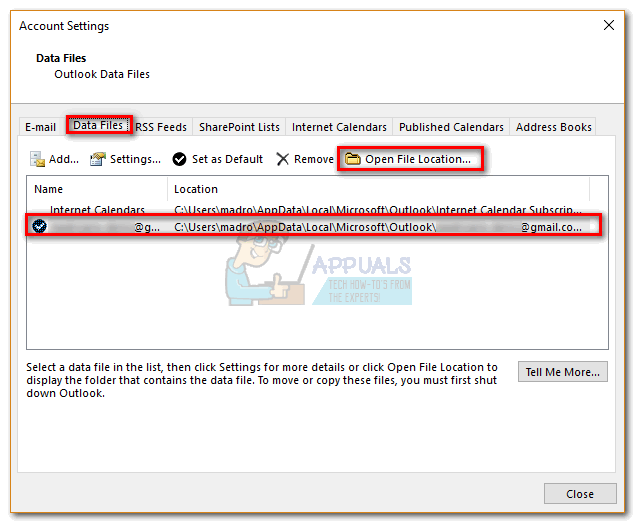
Outlook 2010 HKEY_CURRENT_USER\Software\Microsoft\Office\14.0\Outlook Outlook 2013 HKEY_CURRENT_USER\Software\Microsoft\Office\15.0\Outlook (You can use variables if you are using group policy to push it out to your users.) Outlook 2016 HKEY_CURRENT_USER\Software\Microsoft\Office\16.0\Outlook Create a string value named ForceOSTPath and add the path. Open the registry editor and browse to this key (create it if it doesn't exist). You need to set this key before you add the account to your profile. In Outlook 20, it applies only to new profiles. In Outlook 2010, Outlook 2013 and Outlook 2016 it will apply to new accounts in a profile. The ForceOSTPath key is supported by Outlook 2003 and up. Using ForceOSTPath to set the file location
#HOW TO CHANGE OUTLOOK OST FILE LOCATION OFFLINE#

In short, if you want a usable backup of your mailbox, export the contents to a *.pst file instead of including the *.ost in a backup file. If the server fails and there is no server backup, the contents of the current, most up-to-date *.ost can be used to repopulate the server. If you try to use an old cache file, Outlook will complain that it doesn't match the server mailbox.

Moving the offline cache so its easier to back it up is generally pointless: it's an offline copy of your Exchange mailbox and it can only be opened by the account that created it. For the most part, it only makes sense to move it if the C: drive is full. While it's usually not necessary to relocate the offline cache used by an Exchange account, it is possible to move it to another folder or partition. This is not an Exchange account for what it's worth.To totally unlock this section you need to Log-in

This had a few more settings options.but still not the ones you describe. When I click the mail account, it just gives me the pathway to the file (which I cannot change), and an option to compact.Ĭonversely, I have a second data file/account I was trying to make the default location. So I had saw this in my searching, but I don't have those settings. Again click OK when it is about to start Microsoft Outlook.Close the Account Settings and Mail Set Up box. In the case of Advanced Microsoft Exchange Program, put a checkmark on Use Cached Exchange Mode and click on OK button. After that, select the Browse tab and then OST folder that was moved to a new folder in a different location. Select Outlook Data file settings followed by “I want to move old file option”. In case of prompt, press the OK button and select Settings.įrom Advanced Tab, select Outlook Data File Settings followed by Disable offline use and then Yes. Uncheck the Use Cached Exchange Mode, and click OK. Now, start Microsoft Exchange account, select the Advanced section. Go to File > Info > Account Settings > Account Settings > Data Files.Ĭhoose the Exchange Server account and select Settings.


 0 kommentar(er)
0 kommentar(er)
